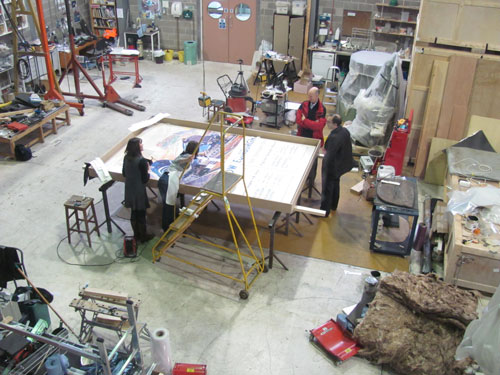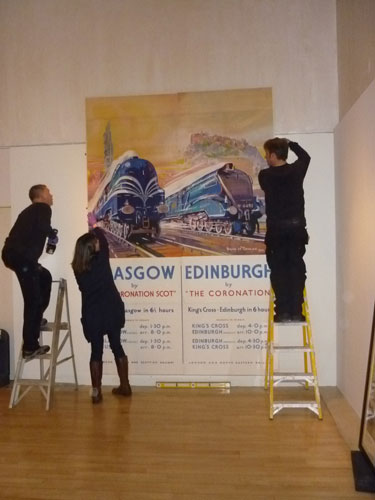The railway posters currently on display in the See Scotland by Train exhibition received extensive conservation treatment to prepare them for display, increase their accessibility, and improve their long-term stability.
Prior to acquisition by National Museums Scotland, many of the posters had been backed onto a heavy weight paper and fabric with a thickly applied adhesive resembling wallpaper paste. This was probably done to make them more robust for handling and transportation. They were then rolled tightly into plastic tubes for transport and storage.
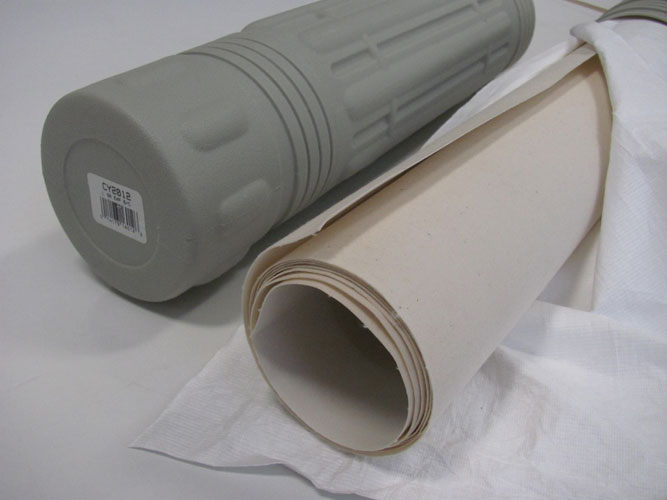
Most challenging by far was the conservation of the Coronation, a poster which was acquired in three sections – two trains and one text panel – and measures over 3×2 metres in total.
Unfortunately, the backings and the rolled format made the sections very difficult to handle and flatten for display and we therefore began a lengthy process to undo this work.
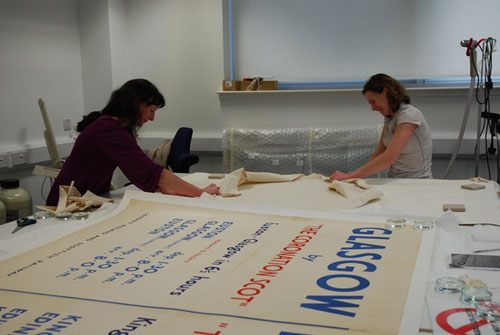
Our Textile Conservation colleagues assisted us with treating these large objects. We had to gently tear and pull the canvas away, which required a great deal of muscle!
The paper backing was then removed with scalpels and localised moisture. It was a very time consuming process.
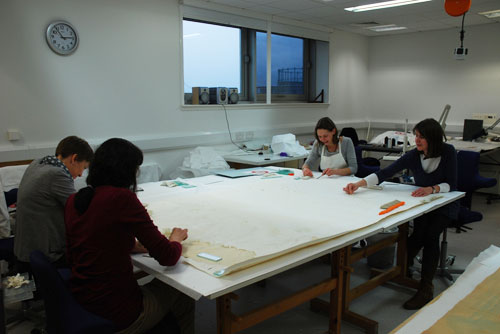
Once the unwanted paper backing was removed from all three sections, the degree of damage, in the form of tears, creasing, dirt and overall fragility of the poster, was evident.
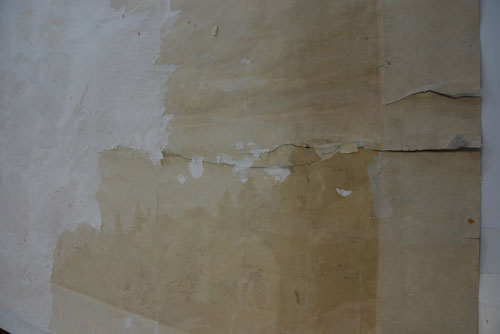
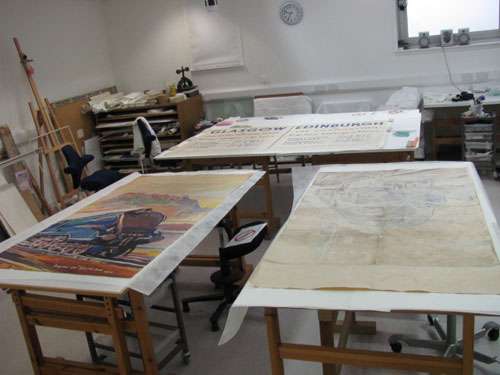
The lithographic inks were tested for solubility in water and then the posters were washed in filtered tap water to remove soluble dirt and discolouration, plus adhesive residues, from the backing paper. Each section of the Coronation was washed three or four times.
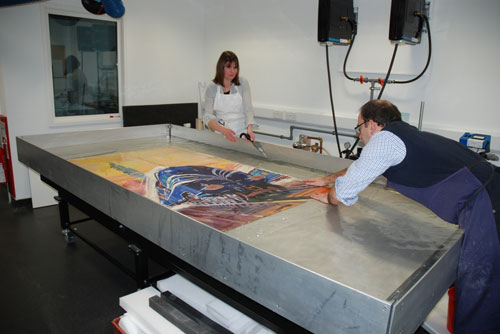
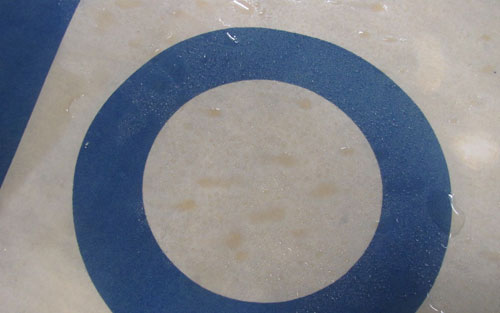
Once all soluble discolouration was removed, each section of the poster was ‘lined’ using traditional paper conservation techniques and materials. A very lightweight Japanese paper and thin wheat starch paste adhesive, the consistency of single cream, was applied to the back of the poster. This offered strength and support for the object. Each newly lined section of poster was then stretched out onto wooden boards for flattening.
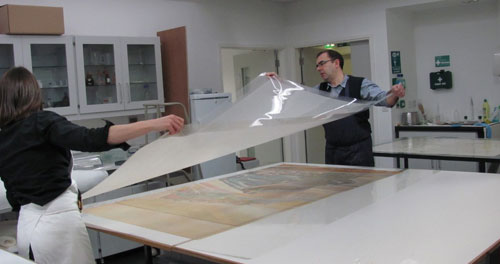
Deciding on a method of display for such a large poster presented another challenge. Logistically, we were also confronted with hurdles, as we were unable to move such a large sized object in and out of our first floor labs at the National Museums Collection Centre in Granton. We therefore moved to Engineering Conservation in Building 14 and worked in the Spray Booth, which had recently been used for painting the luggage cart currently on display at the entrance to the exhibition.
Our Exhibition Technicians constructed a wooden lattice frame, which was dimensionally just greater than the three sections of the poster combined.
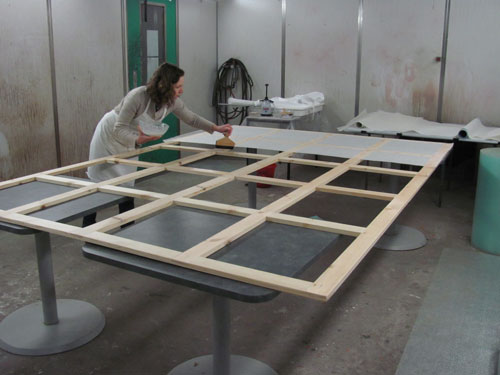
We then adhered four layers of Japanese paper using a thick consistency wheat starch paste over the entire frame in strips and sheets. Each layer was allowed to dry before proceeding with the next. By the end we had constructed a smooth and well tensioned support to attach the Coronation poster.
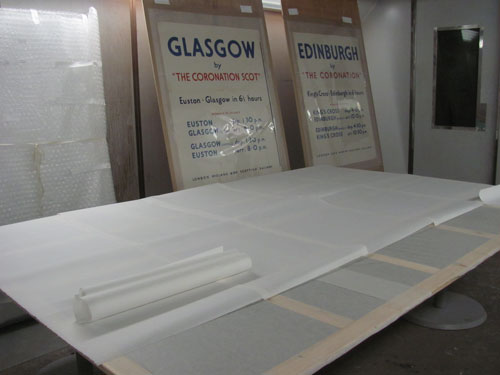
Hanging devices were attached onto the back of the frame. Each section of poster was then removed from its stretching board, positioned onto the wooden frame and adhered around the edges. The text panel was attached first, followed by the Glasgow and then Edinburgh train.
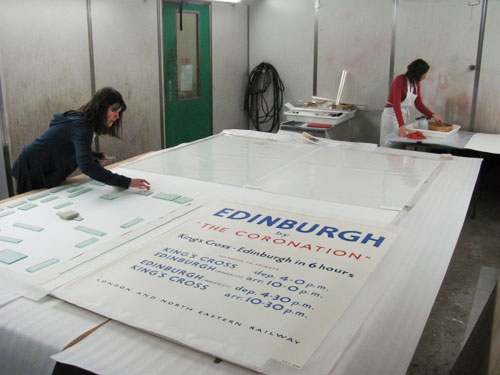
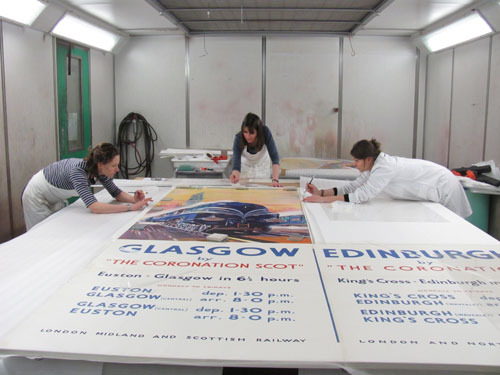
The exhibition technicians also constructed a custom-made frame for the object to travel in, and we hired specialist art movers to drive the Coronation from the Collection Centre to the museum. It was then manoeuvred by four people from the lorry, to the lift at Bristo Port, through the National Museum of Scotland, into the gallery, out of the frame and onto the wall, all before the museum opened to the public at 10am.
